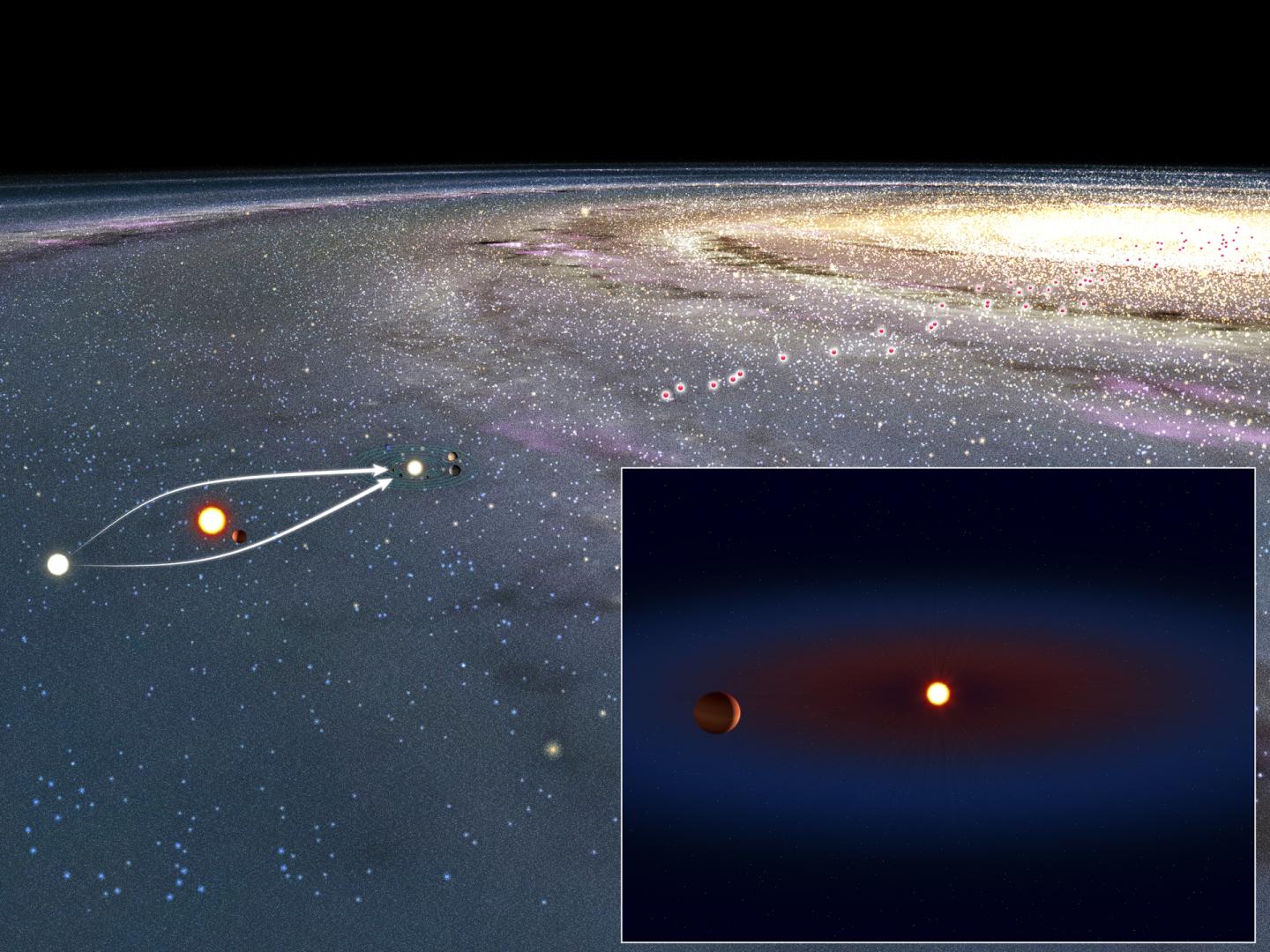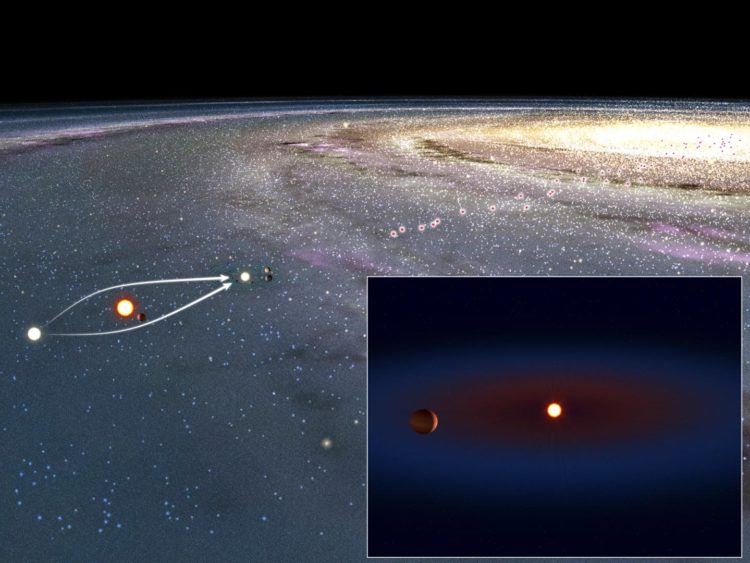
Credit: University of Tokyo
Researchers using telescopes around the world confirmed and characterized an exoplanet orbiting a nearby star through a rare phenomenon known as gravitational microlensing. The exoplanet has a mass similar to Neptune, but it orbits a star lighter (cooler) than the Sun at an orbital radius similar to Earth’s orbital radius. Around cool stars, this orbital region is thought to be the birth place of gas-giant planets. The results of this research suggest that Neptune-sized planets could be common around this orbital region. Because the exoplanet discovered this time is closer than other exoplanets discovered by the same method, it is a good target for follow-up observations by world-class telescopes like the Subaru Telescope.
On November 1, 2017 amateur astronomer Tadashi Kojima in Gunma Prefecture, Japan reported an enigmatic new object in the constellation Taurus. Astronomers around the world began follow-up observations and determined that this was an example of a rare event known as gravitational microlensing. Einstein’s Theory of General Relativity tells us that gravity warps space. If a foreground object with strong gravity passes directly in front of a background object in outer space this warped space can act as a lens and focus the light from the background object, making it appear to brighten temporarily. In the case of the object spotted by Kojima, a star 1600 light-years away passed in front of a star 2600 light-years away. Furthermore, by studying the change in the lensed brightness, astronomers determined that the foreground star has a planet orbiting it.
This is not the first time an exoplanet has been discovered by the microlensing technique. But microlensing events are rare and short lived, so the ones discovered so far lie towards the Galactic Center, where stars are the most abundant. In contrast, this exoplanet system was found in almost exactly the opposite direction as observed from the Earth.
One team led by Akihiko Fukui at the University of Tokyo using a collection of 13 telescopes located around the world, including the 188-cm telescope and 91-cm telescope at NAOJ’s Okayama Astrophysical Observatory, observed this phenomenon for 76 days and collected enough data to determine the characteristics of the exoplanet system. The host star has a mass about half the mass of the Sun. The exoplanet around it has an orbit similar in size to Earth’s orbit, and a mass about 20% heavier than Neptune.
This orbital radius around this type of star coincides with the region where water condenses into ice during the planet formation phase, making this place theoretically favorable for forming gas-giant planets. Theoretical calculations show that this kind of planet has an a priori detection probability of only 35%. The fact that this exoplanet was discovered by pure chance suggests Neptune-sized planets could be common around this orbital region.
This exoplanet system is closer and brighter as seen from Earth than other exoplanet systems discovered by microlensing. This makes it a prime target for follow-up observations with world-leading telescopes like the Subaru Telescope or next generation extremely large telescopes like the Thirty Meter Telescope TMT.
###
Media Contact
Dr. Hitoshi Yamaoka
[email protected]
Original Source
https:/
Related Journal Article
http://dx.





